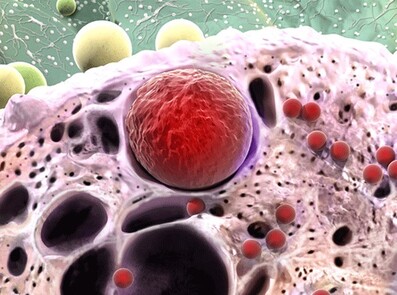Creon®
Prescribing Information
PRESCRIBING INFORMATION
Creon Micro Pancreatin 60.12 mg Gastro-resistant Granules, Creon 10000 Capsules, Creon 25000 Capsules
Please refer to Summary of Product Characteristics (SmPC) before prescribing.
Presentation:
Creon Micro: Gastro-resistant granules of pancreatin, containing in 100mg: 5,000 PhEur units of lipase; 3,600 PhEur units of amylase; 200 PhEur units of protease.
Creon 10000: Each capsule contains pancreatin equivalent to: 10,000 PhEur units of lipase; 8,000 PhEur units of amylase; 600 PhEur units of protease.
Creon 25000: Each capsule contains pancreatin equivalent to: 25,000 PhEur units of lipase; 18,000 PhEur units of amylase; 1,000 PhEur units of protease.
Indication: Pancreatic exocrine insufficiency.
Dosage and Administration: Creon Micro: Initially 100mg (5000 lipase units) taken with each feed or meal or immediately after. The required quantity of granules should be dispensed using the measuring scoop provided which holds 100mg. In young infants, mix with a small amount of (undiluted) apple juice and give from a spoon directly before the feed. In weaned infants, mix with acidic liquids or soft foods (e.g. undiluted apple juice or apple puree) and take directly before the meal without chewing. Alternatively, mix the granules with a small amount of milk on a spoon and administer to the infant immediately. The granules should not be added to the baby’s bottle.
Creon 10000 and 25000: Initially one or two capsules during or immediately after meals, then adjust according to response. The capsules can be swallowed whole, or for ease of administration they may be opened and the granules taken with acidic fluid or soft food, but without chewing. This could be apple sauce or yoghurt or any fruit juice with a pH less than 5.5, e.g. apple, orange or pineapple juice.
Creon Micro, 10000 and 25000: Dose increases, if required, should be added slowly with careful monitoring of response and symptomatology. Maximum daily dosage of Creon Micro should not exceed 10,000 units lipase/kg/day. Ensure adequate hydration. If the granules are mixed with fluid or food, it is important that they are taken immediately and the mixture not stored, otherwise dissolution of the enteric coating may result. In order to protect the enteric coating, it is important that the granules are not crushed or chewed. Crushing and chewing of the minimicrospheres or mixing with food or fluid with a pH greater than 5.5 can disrupt the protective enteric coating. This can result in early release of enzymes in the oral cavity and may lead to reduced efficacy and irritation of the mucous membranes. Care should be taken to ensure that no product is retained in the mouth. Colonic damage has been reported in patients with cystic fibrosis taking in excess of 10,000 units of lipase/kg/day (see below).
Contraindications, Warnings and Precautions: Hypersensitivity to pancreatin of porcine origin or any excipients. Fibrosing colonopathy has been reported in CF patients taking high dose pancreatin preparations. As a precaution, medically assess unusual or changes in abdominal symptoms, especially for doses above 10000 units of lipase/kg/day.
Pregnancy and Lactation: There is inadequate evidence of safety in use during pregnancy. Pancreatic enzymes can be used during breast-feeding.
Effects on Ability to Drive and Operate Machinery: No or negligible influence on ability.
Undesirable Effects: Most commonly, gastrointestinal disorders. Common: nausea, vomiting, constipation, diarrhoea and abdominal distension. Gastrointestinal disorders are mainly associated with the underlying disease. Similar or lower incidences compared to placebo were reported for abdominal pain (very common, ≥1/10). Uncommon: rash. Frequency unknown: Hypersensitivity (anaphylaxis), pruritus and urticaria, strictures of the ileo-caecum and large bowel (fibrosing colonopathy). See SPC for further information.
Interactions: no studies performed.
Marketing Authorisation Holder: Mylan Products Ltd., 20 Station Close, Potters Bar, Herts, EN6 1TL
Marketing Authorisation Number: Creon Micro: PL 46302/0031, Creon 10000: PL 46302/0028, Creon 25000: PL 46302/0029,
NHS price: Creon Micro (20g): £31.50, Creon 10000 (100 capsules): £12.93, Creon 25000 (100 capsules): £28.25
Legal Category: Creon Micro and Creon 10000: P, Creon 25000: POM
Date of Last Revision: 14/08/2020
The SmPC for this product, including adverse reactions, precautions, contra-indications, and method of use can be found at: http://www.mhra.gov.uk/Safetyinformation/Medicinesinformation/SPCandPILs/index.htm and from Mylan Medical Information, Building 4, Trident Place, Hatfield Business Park, Mosquito Way, Hatfield, Hertfordshire, AL10 9UL, phone no. 01707 853000, Email: info@mylan.co.uk

CRE-2022-0744 November 2022

